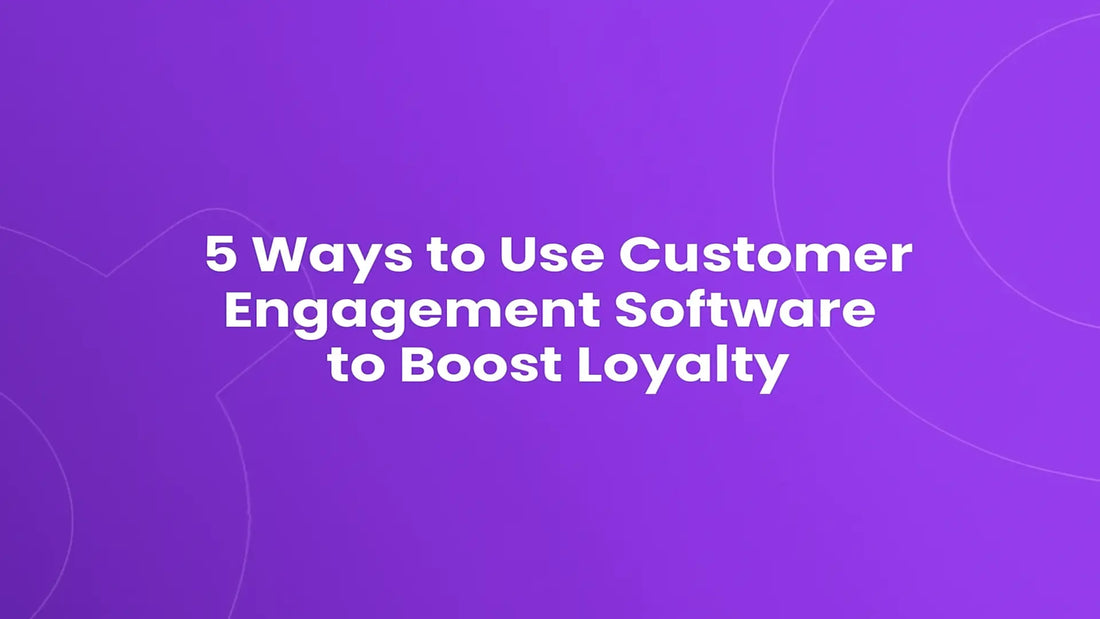Customers stay loyal when they feel seen. They return when interactions feel easy. They recommend brands that remember who they are and what they need.
Customer engagement software turns that into a repeatable system. It centralises data. It automates helpful touchpoints. It helps teams act at the right time with the right message. Use it well and you build stronger relationships that compound.
Below are five practical ways to use a customer engagement tool to lift satisfaction and lifetime value. Each tactic is simple to start. Each one pays back through higher retention and advocacy.
1. Turn Behaviour Into Personalised Journeys
Start by tracking actions across your site and app. Capture sign-ups, clicks, purchases, and support tickets. Feed those events into your customer engagement software for a live view of intent.
Use that data to trigger timely messages. Send a welcome series for new users. Offer guidance when someone stalls on onboarding. Suggest the next best product after a repeat purchase with clear reasoning and social proof. The same logic powers win-back flows for lapsed buyers that reference their history, which feels helpful and respectful instead of pushy.
Two short tests can unlock quick wins. Test subject lines that reference the exact action taken. Test send times aligned to each customer’s past opens. This is where customer engagement platforms shine because they learn from actual behaviour and keep tuning in the background.
2. Build Two-Way Conversations, Not One-Off Blasts
Loyalty grows when customers feel heard. It grows again when they see that their feedback leads to visible changes.
Use in-product surveys to collect quick signals. Ask one question after a meaningful action. Route low scores to support with context inside your customer engagement software so agents reply fast with the full picture. Follow up later to confirm the fix and to thank the customer for the nudge.
Then close the loop publicly. Share a release note or a short email that explains what changed and why. Tag customers who requested it and send them first. This turns feedback into a virtuous cycle and it demonstrates that your customer engagement services value the customer’s time as much as their wallet.
3. Orchestrate Omnichannel Moments That Feel Natural
People move between channels during a single task. They browse on mobile. They complete on the desktop. They skim on social and then return through search.
Meet them where they are with coordinated messages. Use your customer engagement tool to define rules across email, SMS, push, and chat. If a cart is abandoned, send a reminder by email. If the email is unopened, follow with a short push notification the next afternoon. If the item goes on sale, send a final prompt that highlights availability and shipping timelines.
Keep each touchpoint short and focused. Add one action per message. Remove any step that does not move the customer forward. Your customer engagement platforms will track frequency and suppress excess sends automatically, which keeps your brand useful and avoids fatigue.
4. Use Predictive Insights To Prioritise Retention
Not all customers are at equal risk. Some show clear signs that they are about to leave. Others are primed for an upsell based on usage, order patterns, or lifecycle stage.
Train models inside your customer engagement software to flag churn risk early. Watch for signals like declining logins, lower cart value, longer time to repeat purchase, and fewer responses to campaigns. Build a save playbook that includes a human check-in, a how-to guide tailored to past behaviour, and a limited-time incentive that removes friction without discounting by default.
Do the opposite for happy customers. Create a path that offers bundles, subscriptions, or premium support for those who are ready. Your customer engagement services can score leads, hand hot accounts to sales, and schedule success reviews for high-value cohorts. This keeps resources focused where they can have the biggest impact.
5. Turn Support Into A Loyalty Engine
Support is often the first real conversation a customer has with your brand. It can create trust fast. It can also repair a shaky start.
Connect your helpdesk to your customer engagement tool so agents see purchase history, sentiment, and recent campaigns in one place. Offer self-service guided by quick search and step-by-step articles that match common intent. Elevate urgent tickets with clear SLAs and proactive status updates, then track resolution satisfaction automatically.
After each solved issue, trigger a short check-in. Ask if the customer needs anything else. Share tips that prevent the same problem next time. Then invite them to a loyalty programme or a referral offer only when the moment is right. This is where customer engagement platforms remove friction because they unify context and orchestrate follow-ups without extra manual work.
Final Thoughts
Great experiences earn repeat business. Consistent, relevant communication earns trust. Combined, they produce loyal customers who come back and bring others with them.
Start with one clear use case and ship it quickly. Expand once you see the lift. Try Quizell today and your team will create value at every step and build relationships that last.
